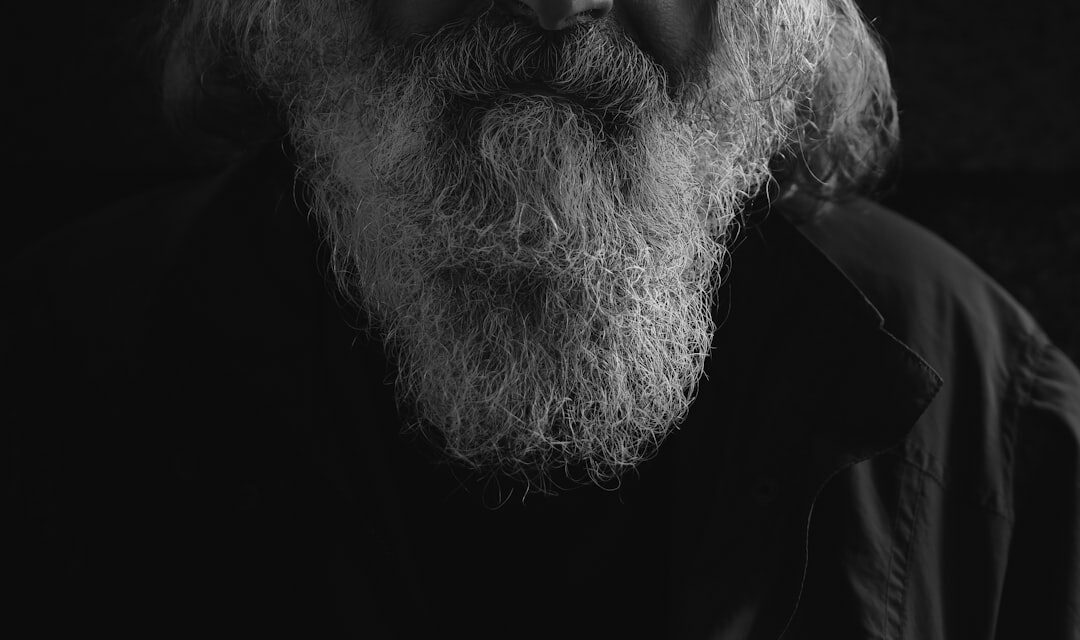Anthony van Dyck, a towering figure in the realm of Baroque art, is celebrated for his exquisite portraiture and his ability to capture the essence of his subjects with remarkable finesse. Born in 1599 in Antwerp, Belgium, van Dyck emerged as one of the most influential painters of the 17th century, leaving an indelible mark on the art world that resonates to this day. His works are characterised by their elegance, sophistication, and a unique ability to convey the personality and status of his sitters.
Van Dyck’s portraits not only reflect the grandeur of the aristocracy but also encapsulate the cultural and social dynamics of his time. His artistic journey is a fascinating tale of talent, ambition, and innovation. Van Dyck’s early exposure to the vibrant artistic environment of Antwerp, coupled with his training under the masterful Peter Paul Rubens, laid the foundation for his future success.
As he navigated through various European courts, van Dyck’s style evolved, incorporating influences from different cultures while maintaining a distinct identity. This article delves into the life and work of Anthony van Dyck, exploring his early years, rise to prominence, and lasting legacy in the world of art.
Summary
- Anthony van Dyck was a prominent Flemish Baroque artist known for his portraits and religious paintings.
- Van Dyck was born in Antwerp in 1599 and trained under the influential painter Peter Paul Rubens.
- He rose to prominence in Antwerp and became a leading portrait painter, influenced by the work of Rubens.
- Van Dyck spent time in Italy, particularly in Genoa, where he developed his own unique style and technique.
- His time at the court of Charles I in England was a significant period in his career, where he produced many iconic portraits of the royal family and nobility.
Early Life and Training
Anthony van Dyck was born into a well-to-do family in Antwerp, where his father was a successful silk merchant. This comfortable upbringing afforded him access to education and the arts from an early age. By the age of ten, van Dyck had already begun to show signs of artistic talent, prompting his parents to enrol him as an apprentice in the workshop of the renowned painter Hendrick van Balen.
This early training provided him with a solid grounding in the techniques of painting and an understanding of composition and colour. However, it was his subsequent apprenticeship under Peter Paul Rubens that would prove pivotal in shaping van Dyck’s artistic identity. Rubens, one of the most celebrated artists of the Baroque period, was known for his dynamic compositions and vibrant use of colour.
Under Rubens’s tutelage, van Dyck honed his skills and absorbed the stylistic elements that would later define his own work. The influence of Rubens can be seen in van Dyck’s early paintings, which exhibit a similar grandeur and attention to detail. By the time he completed his apprenticeship at the age of 21, van Dyck was already making a name for himself as a talented artist in his own right.
Rise to Prominence in Antwerp
Following his training with Rubens, van Dyck quickly established himself as a prominent figure in Antwerp’s artistic community. His early works were characterised by their striking realism and emotional depth, which set him apart from many of his contemporaries. As he began to receive commissions from local nobility and wealthy merchants, van Dyck’s reputation grew exponentially.
His ability to capture not only the physical likeness but also the character and social status of his subjects made him a sought-after portraitist. During this period, van Dyck developed a distinctive style that combined elements of realism with a sense of elegance and grace. His portraits often featured elaborate costumes and rich textures, reflecting the wealth and status of his sitters.
The use of dramatic lighting and carefully composed backgrounds added depth to his works, enhancing their overall impact. As he gained recognition, van Dyck’s clientele expanded beyond Antwerp, leading him to travel throughout Europe in search of new opportunities and artistic inspiration.
The Influence of Rubens on van Dyck’s Work
The impact of Peter Paul Rubens on Anthony van Dyck’s oeuvre cannot be overstated. Rubens’s mastery of colour, composition, and emotional expression served as a guiding force for van Dyck during his formative years. While van Dyck eventually developed his own unique style, many elements of Rubens’s approach remained evident throughout his career.
For instance, both artists shared a penchant for dramatic lighting and dynamic poses that imbued their subjects with a sense of vitality. Moreover, Rubens’s emphasis on capturing the nobility and grandeur of his subjects resonated deeply with van Dyck. The young artist adopted this focus on portraiture as a means to convey not just likeness but also the social standing and character of those he painted.
While he was undoubtedly inspired by Rubens, van Dyck’s ability to infuse his portraits with a sense of intimacy and psychological depth set him apart from his mentor.
The Genoese Period: van Dyck’s Time in Italy
In 1621, seeking new artistic challenges and opportunities, van Dyck left Antwerp for Italy, where he would spend several years honing his craft in Genoa. This period marked a significant turning point in his career as he encountered a new cultural milieu that profoundly influenced his work. The opulence and sophistication of Genoese society provided fertile ground for van Dyck’s talents as a portraitist.
He quickly became popular among the city’s elite, receiving numerous commissions from wealthy families eager to immortalise their likenesses. During his time in Italy, van Dyck absorbed the stylistic elements prevalent in Italian art while simultaneously refining his own approach to portraiture. He began to experiment with more relaxed poses and softer colour palettes, moving away from the more rigid compositions characteristic of Northern European painting.
This evolution is evident in works such as “Portrait of Giovanni Battista Cattaneo,” where the subject is depicted in a more naturalistic manner, exuding charm and charisma. The influence of Italian masters such as Titian and Raphael can also be seen in van Dyck’s use of drapery and composition, further enriching his artistic vocabulary.
The English Period: van Dyck’s Time at the Court of Charles I
In 1632, Anthony van Dyck made a momentous decision to relocate to England at the invitation of King Charles
His portraits from this period are characterised by their grandeur and theatricality, reflecting both the opulence of the court and Charles I’s desire to project an image of power and authority. Van Dyck employed rich colours, elaborate costumes, and dramatic poses to convey the nobility of his subjects. Works such as “Charles I in Three Positions” exemplify this approach, showcasing not only the king’s physical likeness but also his regal bearing and charisma.
Van Dyck’s ability to blend realism with idealism allowed him to create portraits that resonated deeply with viewers, solidifying his status as one of England’s foremost artists.
Portraiture: van Dyck’s Signature Style
Anthony van Dyck is perhaps best known for revolutionising portraiture during the Baroque period. His signature style is characterised by its elegance, sophistication, and an innate ability to capture the essence of his subjects. Unlike many portraitists who focused solely on physical likenesses, van Dyck sought to convey deeper psychological insights into his sitters’ characters.
This approach allowed him to create portraits that were not only visually stunning but also emotionally resonant. One hallmark of van Dyck’s portraiture is his masterful use of colour and light. He employed a rich palette that included deep reds, blues, and golds, which added depth and vibrancy to his works.
Additionally, his innovative use of chiaroscuro—contrasting light and shadow—enhanced the three-dimensionality of his subjects, making them appear almost lifelike. Van Dyck also had a keen eye for detail; he meticulously rendered fabrics and textures, allowing viewers to appreciate the luxuriousness of clothing worn by aristocrats.
The Legacy of Anthony van Dyck
The legacy of Anthony van Dyck extends far beyond his lifetime; he is regarded as one of the most influential portraitists in Western art history. His innovative approach to portraiture set new standards for artists who followed in his footsteps. Van Dyck’s ability to blend realism with idealism paved the way for future generations to explore similar themes in their work.
His influence can be seen in the works of later artists such as Joshua Reynolds and Thomas Gainsborough, who drew inspiration from van Dyck’s techniques and stylistic choices. Moreover, van Dyck’s impact on British art cannot be overstated. As he established himself at the English court, he played a crucial role in shaping the visual culture of 17th-century England.
His portraits not only documented the appearance of key figures but also contributed to the construction of national identity during a time of political upheaval. Today, van Dyck’s works continue to be celebrated for their beauty and emotional depth, ensuring that his legacy endures through centuries.
Notable Works by Anthony van Dyck
Among Anthony van Dyck’s extensive body of work are several notable pieces that exemplify his mastery as a portraitist. One such work is “The Family of Charles I,” which captures not only the royal family but also their relationships with one another through careful composition and expressive gestures. The painting serves as both a historical document and an artistic triumph that showcases van Dyck’s ability to convey intimacy within a grand setting.
Another significant work is “Portrait of Lady Elizabeth Thimbleby,” which highlights van Dyck’s skill in rendering fabric textures and capturing personality through facial expression. The subject’s elegant pose and attire reflect her social status while also revealing her individuality—a hallmark of van Dyck’s approach to portraiture. These works remain integral to understanding both van Dyck’s artistic evolution and the broader context of 17th-century portraiture.
Techniques and Materials Used by van Dyck
Anthony van Dyck employed various techniques and materials that contributed to the distinctive quality of his paintings. He primarily worked with oil paints on canvas—a medium that allowed for greater flexibility in blending colours and achieving intricate details. Van Dyck’s meticulous layering technique involved applying thin glazes over an initial underpainting; this method created depth and luminosity within his works.
In addition to oil paints, van Dyck often used fine brushes made from animal hair to achieve delicate details in fabric textures and facial features. His keen understanding of colour theory enabled him to create harmonious palettes that enhanced the emotional impact of his portraits. Furthermore, he frequently incorporated elements such as drapery or elaborate backgrounds that added richness to compositions while framing subjects within their social context.
Appreciating van Dyck’s Art in the Modern Day
In contemporary times, Anthony van Dyck’s art continues to captivate audiences around the world. His portraits are celebrated not only for their technical brilliance but also for their ability to transcend time by capturing universal human emotions—such as pride, vulnerability, and dignity—within individual sitters. Museums across Europe and North America proudly display his works as part of their collections, allowing new generations to engage with this masterful artist.
Moreover, exhibitions dedicated to van Dyck often explore themes related to identity, power dynamics within society, and cultural representation—issues that remain relevant today. As viewers encounter these portraits in galleries or museums, they are invited not only to appreciate their aesthetic beauty but also to reflect on broader historical narratives that shaped both art history and society itself. In this way, Anthony van Dyck’s legacy endures as an enduring source of inspiration for artists and art lovers alike.
For those interested in exploring different artistic techniques, a fascinating article to check out is “Brush Pen Illustration: Dynamic Line Variation”. This article delves into the use of brush pens to create varying line weights and textures in illustrations, providing valuable insights for artists looking to add depth and dynamism to their work. Just as Anthony van Dyck mastered the use of brushwork in his portraits, this article offers a modern perspective on how artists can achieve similar effects in their own creations.


